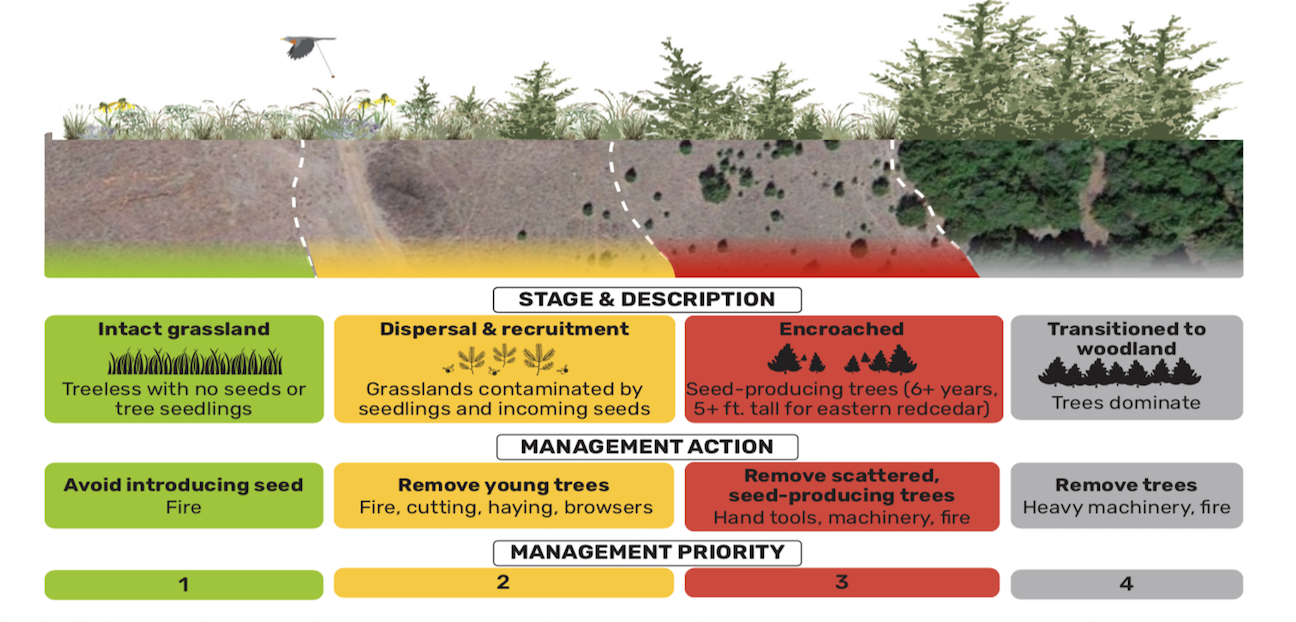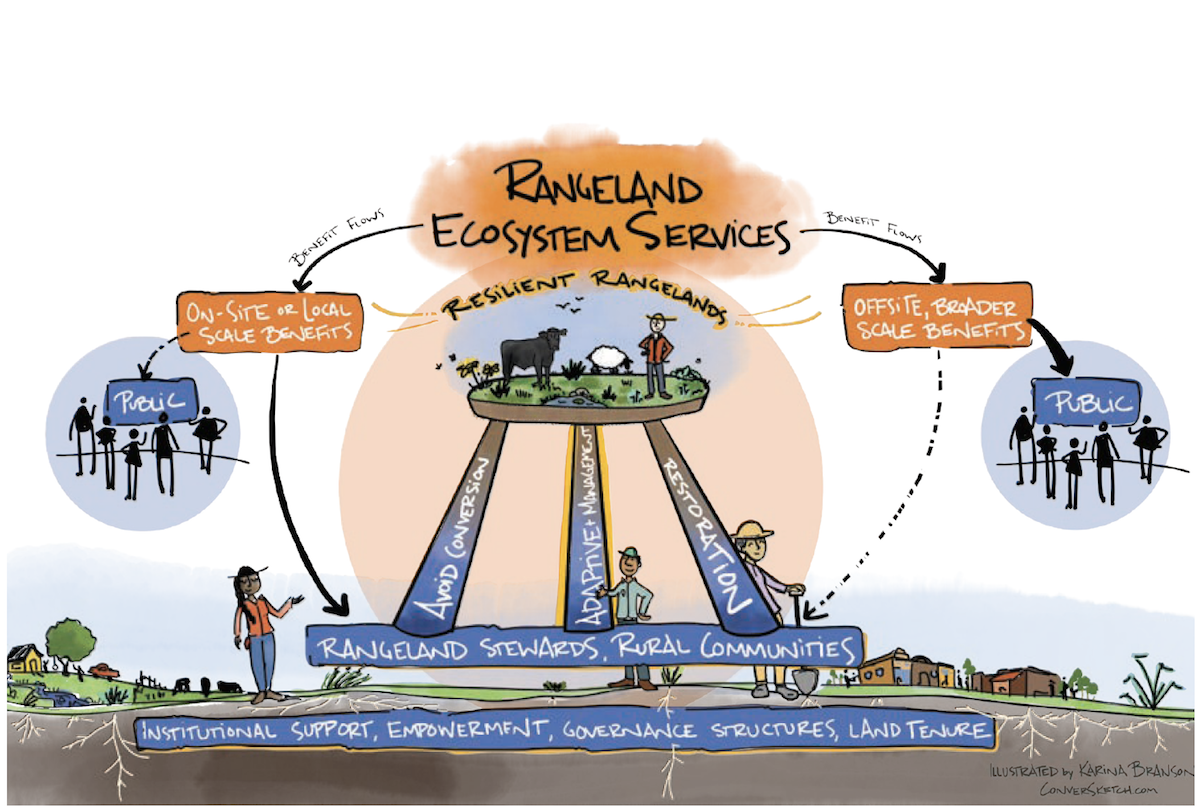 Researchers looked at extreme fire conditions during drought in humid subtropical and semi-arid ecoregions that require innovative management strategies that go beyond the traditional restoration and conservation practices. These practices have either been historically ineffective or economically cost-prohibitive at restoring grass-dominated ecosystems following conversion to resprouting shrublands.
Researchers looked at extreme fire conditions during drought in humid subtropical and semi-arid ecoregions that require innovative management strategies that go beyond the traditional restoration and conservation practices. These practices have either been historically ineffective or economically cost-prohibitive at restoring grass-dominated ecosystems following conversion to resprouting shrublands.
Texas Pasture Land Values Summary
USDA Expands Conservation Practices Qualifying for Climate-Smart Funding
 At the end of October, USDA released an updated NRCS expanded list of practices and activities that are eligible for Climate-Smart funding through the Inflation Reduction Act. In addition, they added additional funding for the practices for the fiscal year 2024.
At the end of October, USDA released an updated NRCS expanded list of practices and activities that are eligible for Climate-Smart funding through the Inflation Reduction Act. In addition, they added additional funding for the practices for the fiscal year 2024.
[Read more…] about USDA Expands Conservation Practices Qualifying for Climate-Smart Funding
2020 Resources Planning Act Assessment
The Resource Planning Act Assessment reports on the past, present, and future of renewable resources on public and private forests and rangelands. The recent 2020 assessment forecast was released in November and includes the following topics:
Grasslands are the Forgotten Ecosystem
 “Anybody can love the mountains, but it takes a soul to love the prairie.” — Willa Cather
“Anybody can love the mountains, but it takes a soul to love the prairie.” — Willa Cather
Since the 1800s, North Americans have historically overlooked the significance of grasslands. With centuries of farming, ranching, energy development and suburban growth, grassland protection and conservation have been pushed aside.
Integrated Pest Management for Woody Encroachment
 The top 5 woody invasive plant species in the Great Plains Grasslands include; Eastern redcedar, Honey mesquite, Chinese tallow, Ashe juniper, and Redberry juniper. Past brush management efforts have been unable to stop or reverse the loss of grasslands at county, state, or regional scales. Traditional management efforts have assumed that there are tolerable levels of the top five woody pests in grasslands before encroachment becomes a resource concern and mechanical or chemical removal of woody plants will restore a site back to a grassland. Scientists are now recommending more integrated approaches for dealing with woody species and ending the reinvasion cycle in grasslands.
The top 5 woody invasive plant species in the Great Plains Grasslands include; Eastern redcedar, Honey mesquite, Chinese tallow, Ashe juniper, and Redberry juniper. Past brush management efforts have been unable to stop or reverse the loss of grasslands at county, state, or regional scales. Traditional management efforts have assumed that there are tolerable levels of the top five woody pests in grasslands before encroachment becomes a resource concern and mechanical or chemical removal of woody plants will restore a site back to a grassland. Scientists are now recommending more integrated approaches for dealing with woody species and ending the reinvasion cycle in grasslands.
[Read more…] about Integrated Pest Management for Woody Encroachment
SRM Multidisciplinary Rangeland Ecosystem Services Report
 The Society for Rangeland Management recently released their Rangeland Ecosystem Services Report: Connecting Nature and People. The report includes five key rangeland service topic areas including; food and fiber, water as an ecosystem driver in rangelands, carbon sequestration and security, plant and insect biodiversity, and wildlife habitat provision.
The Society for Rangeland Management recently released their Rangeland Ecosystem Services Report: Connecting Nature and People. The report includes five key rangeland service topic areas including; food and fiber, water as an ecosystem driver in rangelands, carbon sequestration and security, plant and insect biodiversity, and wildlife habitat provision.
Photo: Rangeland Ecosystem Services Report
[Read more…] about SRM Multidisciplinary Rangeland Ecosystem Services Report
Reducing Woody Encroachment in Grasslands: A Pocket Guide for Planning and Design
 Have you seen the latest Pocket Guide from the Great Plains Grasslands Extension Partnership? This Pocket Guide integrates new guidelines for reducing woody encroachment with a planning process. It is also an important resource that further incorporates the latest, science-based approaches for reducing woody encroachment.
Have you seen the latest Pocket Guide from the Great Plains Grasslands Extension Partnership? This Pocket Guide integrates new guidelines for reducing woody encroachment with a planning process. It is also an important resource that further incorporates the latest, science-based approaches for reducing woody encroachment.
[Read more…] about Reducing Woody Encroachment in Grasslands: A Pocket Guide for Planning and Design
22.4 Million Tons of Rangeland Production Lost to Woody Encroachment in Great Plains Grasslands
Conserving Texas: Quantifying Ecological Return on Investment
 In Texas, close to 95% of the land lies in private ownership, which means relying on collaborative solutions and public-private partnerships to support the stewardship and conservation of natural resources for the public good.
In Texas, close to 95% of the land lies in private ownership, which means relying on collaborative solutions and public-private partnerships to support the stewardship and conservation of natural resources for the public good.
[Read more…] about Conserving Texas: Quantifying Ecological Return on Investment
